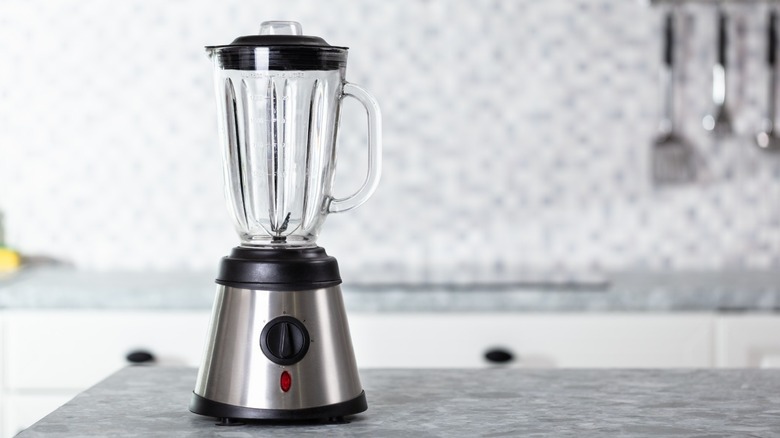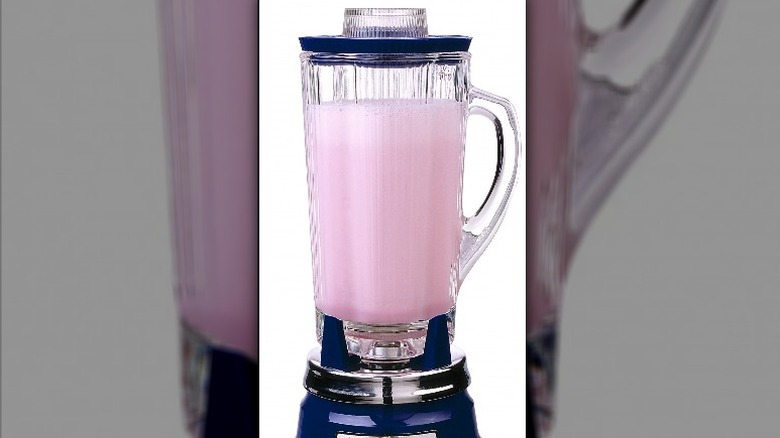The Quick And Easy Way To Wash Your Blender
Smoothies, hummus, nut milk, frozen margaritas, pumpkin bisque — the things a blender can be used to concoct are diverse and numerous. It's a workhorse in the kitchen that most cooks couldn't do without. There are smaller and weaker alternatives to countertop blenders, such as compact single-serving mixers and hand-held immersion blenders. However, per Blender Authority, the superiority of a conventional blender lies in its size and power, making it the better choice for certain recipes.
There's an ongoing debate about whether a food processor and a conventional blender are interchangeable. Food stylist Josh Rink said in Taste of Home, "A blender's pitcher narrows at the bottom, helping to funnel the ingredients to the base." As Taste of Home explains, this shaping makes it excellent for emulsifying dressings and sauces, something a processor's flat work bowl doesn't do nearly as well. In the end, they surmise both tools have a helpful place in the cook's arsenal. However, the convenience they provide feels somewhat lessened when it comes time to clean them. Hard-to-reach places like the inside of a tapering jar, sharp blades, rubber gaskets, and food-trapping grooves are part and parcel of their construction and function. Yet, there is an easy way to wash a blender that harnesses its own power to do most of the work for us.
A clean blender
First, remove as much of the contents in the blender pitcher as possible, then immediately give it a good rinse and wipe-down with warm, soapy water. Next, per KitchenAid, add a few drops of dish detergent to the bottom of the jar, fill it approximately 3/4 with warm water, and put the top back on. Turn on the blender and run it at short intervals to prevent engine burnout, as explained on their site. Once it's clean, rinse the jar under water to eliminate any soapy residue. Clean the housing and dry all parts thoroughly before storing them. KitchenAid recommends washing the blender promptly after use before foods have the opportunity to harden and adhere to the inside of the jar or the blades. While this may appear to be a lot of steps, it's still certainly quicker than manual chopping, mashing, pureeing, and blending.
According to Taste of Home and a viral TikTok video by @feelgoodfoodie, this should only take half a minute. For super sticky ingredients, they suggest whirring up a combination of baking soda and water followed by the soap and water steps outlined above. Though this hack is time-saving and convenient, as mentioned, all the components will need to be completely cleaned and dried every few uses to stem mold or bacteria growth — those are definitely not the kind of ingredients that make a healthy smoothie.

